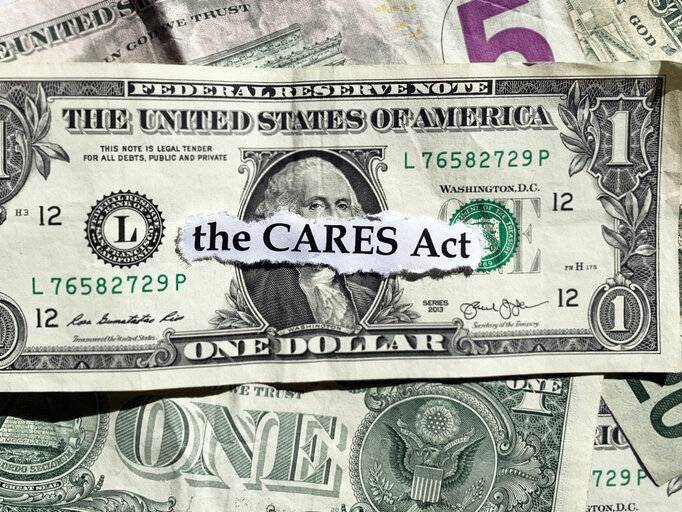Repaying Your CARES Act Retirement Plan Loan or Distribution
If you’re one of the many who have felt the financial impact of the COVID-19 pandemic, then you might have taken out a CARES Act retirement plan loan or withdrawal. And now you may be wondering what the long-term effects will be on your finances—and how to repay your loan or distribution to minimize those effects.
How Does the CARES Act Affect Early Withdrawals?
In normal times, withdrawing money from traditional IRAs or employer plans like 401(k)s before you reach age 59½ means you’ll pay a 10% early withdrawal penalty.
But the Coronavirus Aid, Relief and Economic Security (CARES) Act made some temporary changes to those rules. For those who have been financially or medically affected by COVID-19, the CARES Act:
Waived the early withdrawal penalty
Allowed distributions up to $100,000 from eligible retirement plans
Gave employers the option to allow loans of 100% of your vested 401(k) balance up to $100,000
What Are the Impacts of Your Loan or Distribution?
While the new law benefits you if you’re hurting for cash now, it also has consequences. For example, if you took a 401(k) plan loan, you can delay repaying your loan for up to a year, but you still accrue interest.
And if you took a distribution, your withdrawal is penalty-free, but it is considered taxable income. You’ll have to pay taxes on that money, either all at once on your 2020 tax return or over three years (2020, 2021, and 2022).
You can avoid taxes by paying back the distribution, but the process can get complicated. According to the IRS statement on coronavirus relief for retirement plans and IRAs:
If you repay a coronavirus-related distribution, the distribution will be treated as though it were repaid in a direct trustee-to-trustee transfer so that you do not owe federal income tax on the distribution.
If, for example, you receive a coronavirus-related distribution in 2020, you choose to include the distribution amount in income over a 3-year period (2020, 2021, and 2022), and you choose to repay the full amount to an eligible retirement plan in 2022, you may file amended federal income tax returns for 2020 and 2021 to claim a refund of the tax attributable to the amount of the distribution that you included in income for those years, and you will not be required to include any amount in income in 2022.
This means you can wait until year three to pay back the distribution, but you’ll also have to file amended tax returns for the first two years to get a refund on the taxes you already paid.
As a fiduciary financial planning firm in Roseville and Folsom, California, we generally recommend that you assess your financial and tax situation, as well as the potential for increasing tax rates, to determine which course of action suits you best.
Other Points to Keep in Mind When Repaying
If you took out a 401(k) loan, check with your plan sponsor to understand their process for repayment. If you lost your job, it becomes critical to understand the repayment rules. The repayment timeline is likely to be considerably shortened, you might end up paying the early withdrawal penalty, and the unpaid balance could end up being considered a distribution—with the corresponding taxes.
If you want to pay back a distribution, the process is similar to making a rollover contribution. Even if you took a distribution from an employer-sponsored plan and then left or lost that job, you could still repay your distribution if the plan accepts rollover contributions from former employees. If that isn’t the case for you, your best bet may be to roll the distribution over to an IRA.
Not all distributions are eligible for repayment, even if they were taken for coronavirus-related reasons. Periodic payments aren’t eligible for rollover distributions and therefore can’t be repaid. For example, if you took annuity payments in 2020, you cannot repay them.
If you’ve taken multiple distributions, each one has its own three-year repayment period. For example, if you took one coronavirus-related IRA withdrawal on March 27, 2020, and another on October 1, 2020, you will need to pay the first one back by March 28, 2023—but you will have until October 2, 2023, to repay the second withdrawal.
You cannot repay the distribution with interest. The IRS stipulates that the repayment cannot exceed the original amount of the loan.
Conclusion
COVID-19 took a financial toll on many Americans, and many dipped into their retirement accounts to make ends meet. But as you get back on your feet, it’s worth noting that repaying your CARES Act loan or withdrawal is a worthwhile goal.
Besides the taxes you’ll end up paying, there’s another reason to repay that loan or withdrawal as soon as you can: Your retirement plan balance is going to play an important role in your financial well-being when you retire. The longer you can let your retirement savings compound, the better for your retirement income.
If you are unclear how repayment fits into your situation, consider talking with a fee-only, fiduciary financial advisor who can advise you based on your overall goals. Schedule a complimentary, 15-minute call with a fee-only, fiduciary financial advisor today to discuss your personal situation.
This material was prepared by Kaleido Inc. from information derived from sources believed to be accurate. This information should not be construed as investment, tax or legal advice.
Parkshore Wealth Management is a family-owned, independent, fee-only Registered Investment Advisor serving the greater Sacramento area with an office in Roseville, CA. We partner with financially responsible individuals and families who are eager to take positive steps that will allow them to use their money to build the life they desire. The firm is led by Harold Anderson, CFP®, and Daniel Andersen, CFP®, both members of NAPFA, the country's leading professional association of fee-only financial advisors.

